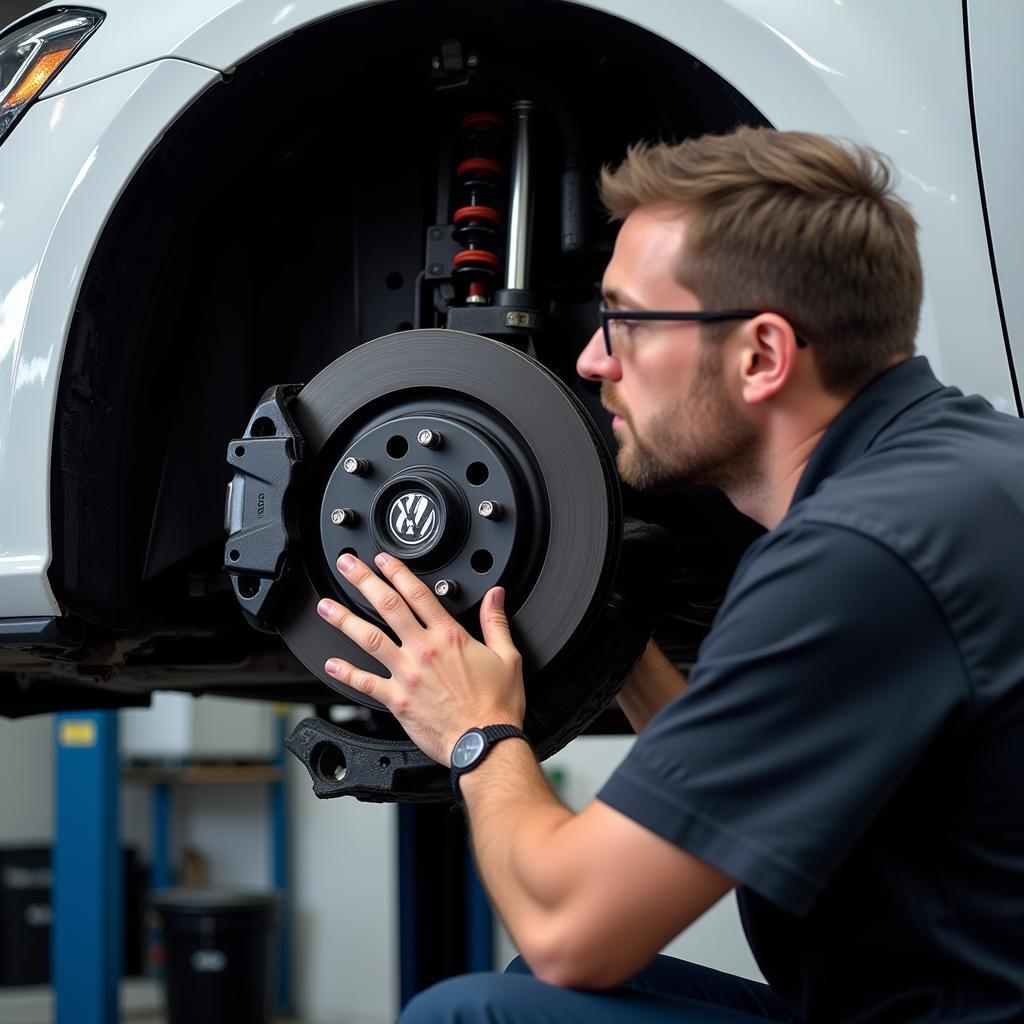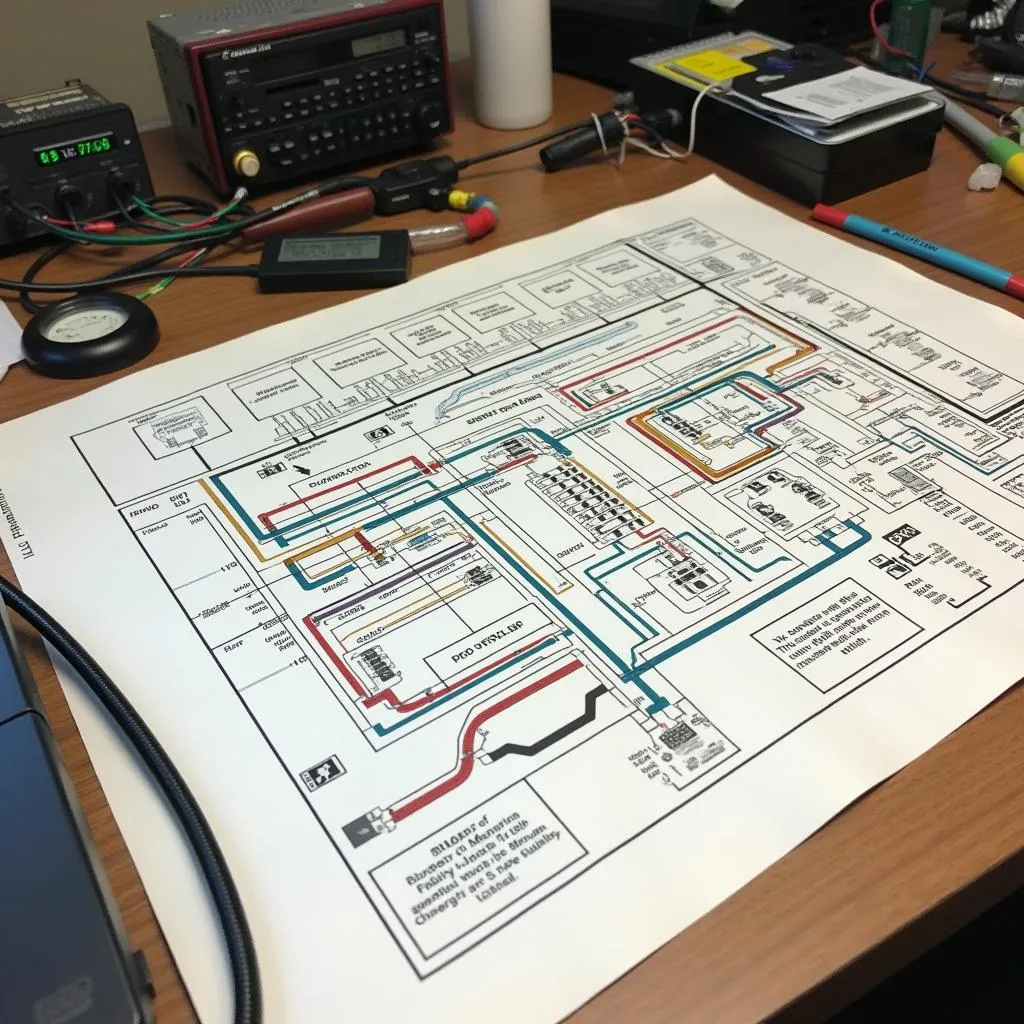The brake pad warning light on your VW Golf Mk7 is a crucial safety feature, designed to alert you when your brake pads have worn down and require replacement. Ignoring this warning can lead to reduced braking performance and potential safety hazards. This comprehensive guide will delve into the common causes of the brake pad warning light illumination and provide step-by-step solutions to help you address this issue effectively.
Understanding Your VW Golf Mk7 Brake Pad Warning System
Your Mk7 utilizes an electronic sensor embedded within the brake pads themselves to monitor their thickness. When the pad material wears down to a predetermined level, the sensor triggers the warning light on your dashboard. This system ensures you’re alerted in a timely manner, giving you ample opportunity to replace the pads before they compromise braking efficiency.
Common Causes of Brake Pad Warning Light Activation
While worn brake pads are the most common culprit, several other factors can trigger the warning light on your Mk7. These include:
- Worn Brake Pad Sensors: The sensors themselves can malfunction or become damaged over time, leading to a false warning.
- Damaged Brake Pad Wiring: The wiring connecting the sensors to the vehicle’s electrical system can be susceptible to wear and tear, potentially causing a short circuit or open circuit.
- Low Brake Fluid Level: Insufficient brake fluid level, often due to a leak in the system, can also trigger the warning light.
- Faulty Brake Pad Warning Light Switch: In some instances, the switch responsible for illuminating the warning light may malfunction, causing it to illuminate erroneously.
Troubleshooting the Brake Pad Warning Light on Your VW Golf Mk7
Before assuming your brake pads are worn, it’s essential to perform a thorough diagnosis to pinpoint the root cause. Here’s a step-by-step guide:
- Check Brake Fluid Level: Begin by inspecting the brake fluid reservoir located under the hood. If the fluid level is below the minimum mark, it indicates a potential leak or worn brake pads.
- Inspect Brake Pads: Visually inspect the brake pads through the spaces between the wheel spokes. If the pad material is less than 1/4 inch thick, they’re due for replacement.
- Test Brake Pad Sensors: If the brake pads appear to have sufficient material, use a multimeter to test the continuity of the brake pad sensors. A lack of continuity suggests a faulty sensor.
- Inspect Wiring Harness: Carefully examine the wiring harness connecting the brake pad sensors to the vehicle’s electrical system for signs of damage, such as cuts, abrasions, or loose connections.
Solutions for a VW Golf Mk7 Brake Pad Warning Light
Once you’ve identified the underlying cause, you can proceed with the appropriate solution:
- Replace Worn Brake Pads: If your inspection reveals worn brake pads, it’s crucial to replace them immediately to ensure optimal braking performance and safety. Always replace pads in axle pairs (both front or both rear) to maintain balanced braking.
- Replace Faulty Sensors or Wiring: Damaged sensors or wiring will require replacement. It’s recommended to replace the sensors whenever you replace your brake pads to avoid future issues.
- Address Brake Fluid Leak: A low brake fluid level signifies a leak that needs immediate attention. Have a qualified mechanic inspect the brake system and repair any leaks before refilling the fluid.
When to Seek Professional Help
While some brake pad warning light issues can be resolved with basic DIY skills, certain situations warrant the expertise of a qualified mechanic:
- You’re uncomfortable working with vehicle brakes.
- You’ve replaced the brake pads and sensors but the warning light persists.
- You suspect a brake fluid leak but can’t locate the source.
 VW Golf Mk7 Brake System Repair
VW Golf Mk7 Brake System Repair
Conclusion
The brake pad warning light on your VW Golf Mk7 is a critical safety feature that should never be ignored. By understanding its causes and following the troubleshooting steps outlined in this guide, you can effectively address the issue and ensure the optimal performance and safety of your vehicle’s braking system. Remember, regular brake system inspections and timely maintenance are paramount for a safe and enjoyable driving experience.


